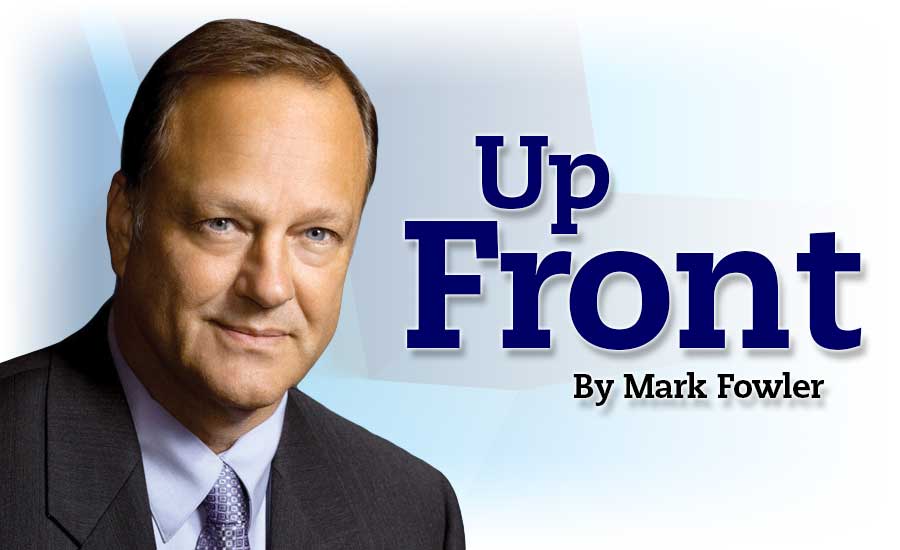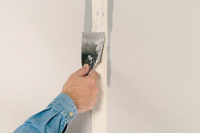North American versus European Levels of Finish Quality Standards
Keep a Level Head

The Levels of Finish for gypsum wallboard have been around for a while. Ironically, the North America levels and European levels are similar yet very different. On our side of the pond, we have five levels; whereas Europe only has four. Similarities in the comparison are the higher the number, the better the hiding power of the joints. The intent of establishing the standards for levels is to provide guidance to owners on expectations and direction to applicators to meet those expectations. The different levels allow for options, criteria and product selection all in the goal to avoid conflicts when the project is complete.
The North American and the European versions also have unique nomenclature. For example, it is common in the EU to intermix the terms drywall and plasterboard. Common to both continents, drywall can be applied over masonry substrates. Europe refers to this as “dry lining.” While North America tends to use furring, Europe prefers the dot-and-daub system to affix gypsum panels. The dot-and-daub method employs a plaster like material to adhere gypsum panels to the masonry substrates. The applicator places six large daubs of adhesive plaster to the masonry and then presses the gypsum panel to be secured to the wall. The panels are straightened while the plaster is wet. Once set, the joint treatment of the panels can start.
Classifications of Quality Level
The European Union produces a document titled “Drywall Jointing and Finishing, Surface Quality Level of Classifications.” It seems the term drywall alternates to plasterboard when the panel is to receive a skim coat of plaster. The levels are meant to establish the quality that generally improves with the higher level specified, as it is in North America. The following is the short version of the European four quality levels.
Quality Level 1: This is a basic one coat application of joint compound or what we would call “fire taping.” Tool marks, grooves and ridges are allowed.
Quality Level 2: This is the basic joint finish level for the European market with two coats of joint compound. Roughly equivalent to the North American Level 3. The standard states application marks may not be totally avoidable. This is the finish when none is specified and can be painted.
Quality Level 3: This is the premium level for drywall finish. This level requires a tight skim coat of joint compound over the entire drywall surface. Ridges and application marks are not acceptable. This would be similar to a Level 5 North American finish.
Quality Level 4: This is the high-end finish. While this level requires a minimum material thickness, the skim coat is intended to be a measurable skim coat of plaster. We would call this a one-coat veneer plaster system.
EU vs. NA Specifications
This language used in the European Union document is more directed to a performance, while the North American specification version adds a prescriptive approach. It is also clear the European version covers a broader spectrum of options. Both are intended as a guide with the North American version having more levels, detail and restrictions. The EU version is more expansive in higher-end options, with less focus on the details of the lower Levels of Finish. It does make one wonder why this is.
The North American version is possibly driven by the fact we are a more litigious society. On a recent trip to Germany and a meeting with a major construction material manufacturer, they were a bit surprised by the prevalence of litigation in North American construction. In Europe, the owner decides what they want as a quality level and the contractor is then allowed more freedom through means and methods to simply make it happen. When litigation becomes more prevalent in society, so does the need for clarification. This can result in the need for over-burdensome standards.
The EU Document
This European paper is available online at eurogypsum.org and worth reviewing and comparing to the standards of North America. The paper promotes full skim coats over just treating the joints. The European document then takes the step to encourage designers to consider and select the Level 4 quality option. The document states that an EU Quality Level 4 brings more value and helps protect workers as sanding is avoided, thus reducing the risk of musculoskeletal disorders and enhancing skills that make workers more flexible in the employment market place.
Looking for a reprint of this article?
From high-res PDFs to custom plaques, order your copy today!








